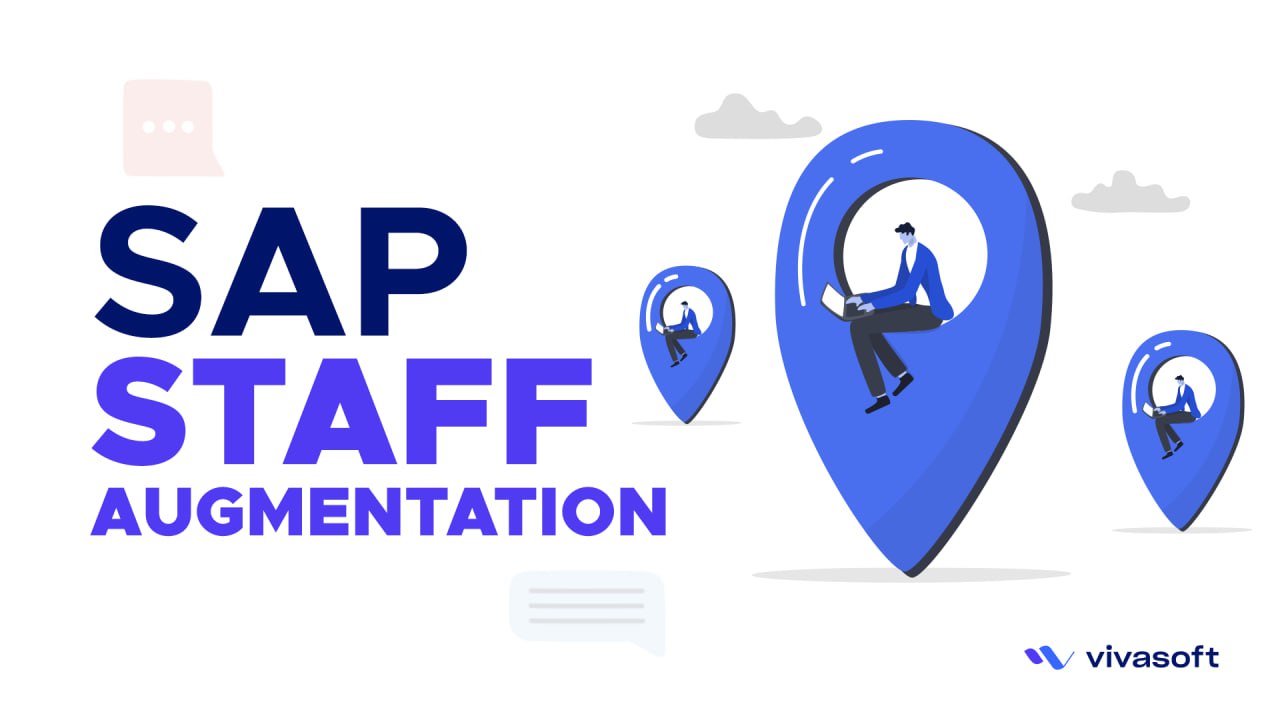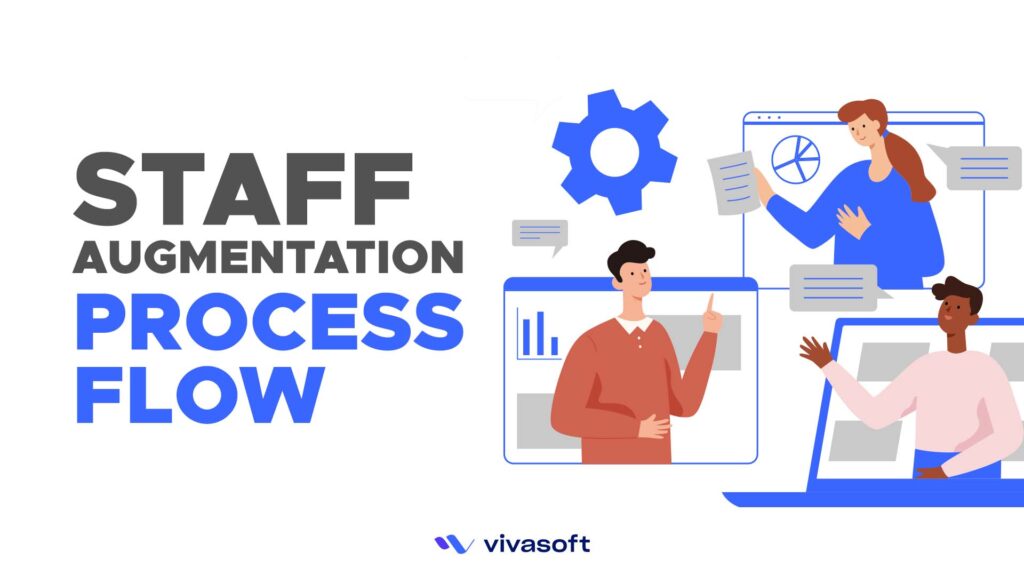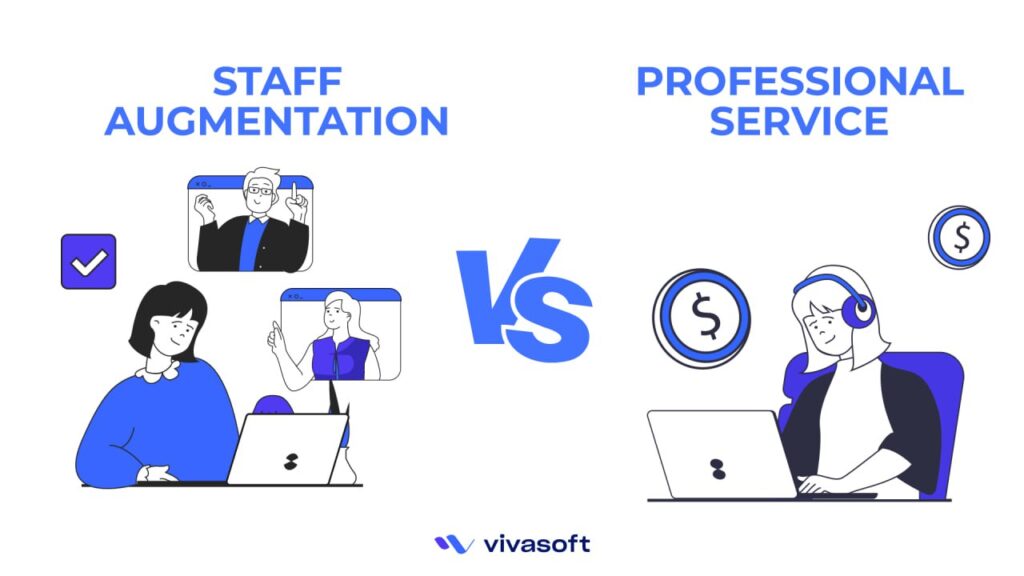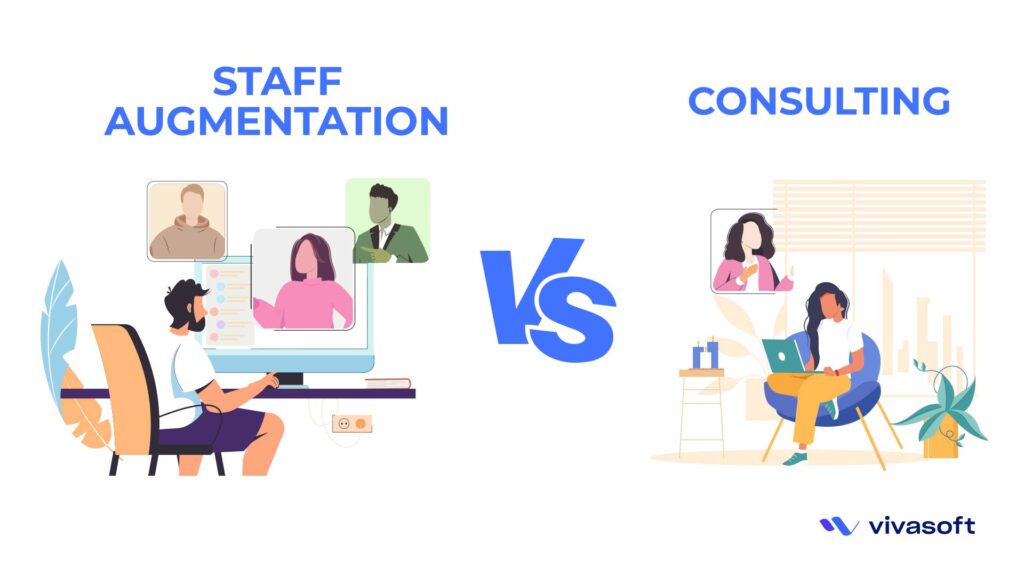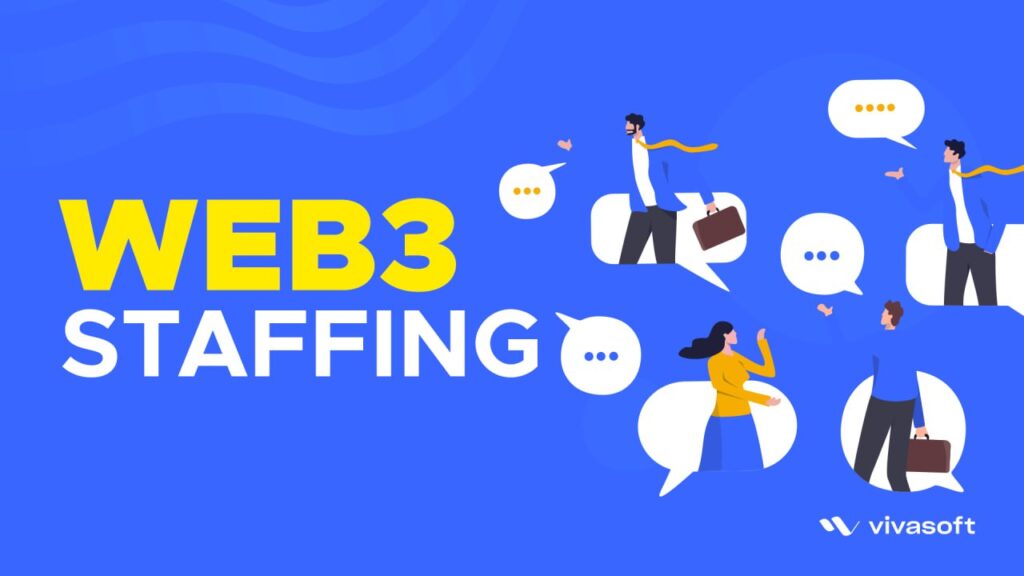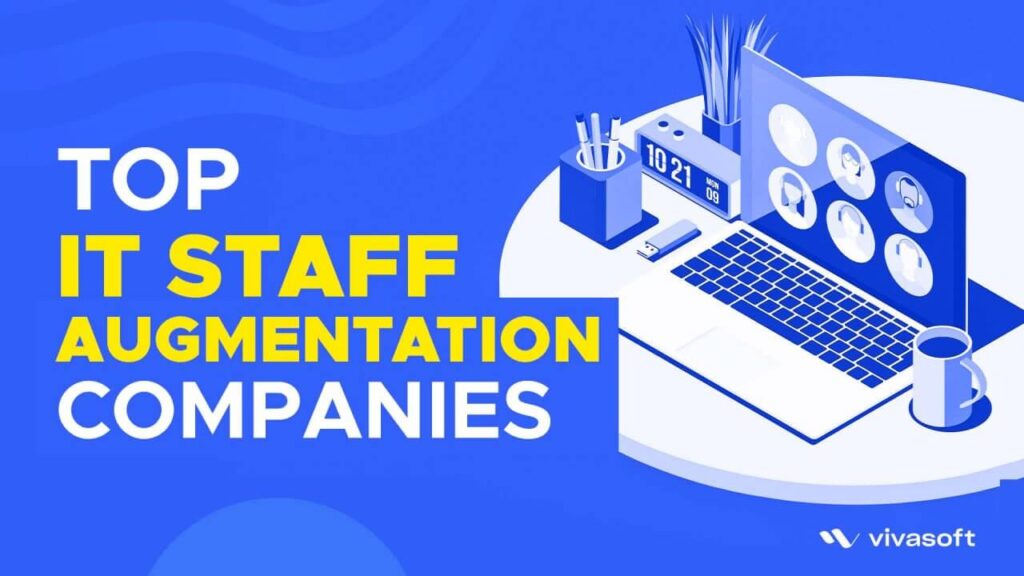SAP Staff Augmentation is designed for businesses needing expertise in SAP technologies. It’s not just about adding extra hands. It’s about strategically integrating SAP specialists to tackle unique challenges. SAP Staff Augmentation focuses on SAP system expertise. It enhances your team’s SAP skills and provides precise solutions.
Finding the best SAP Staff Augmentation solution is like finding the perfect tool for the job. It’s about skills as well as the perfect fit. Opting for the right SAP staff augmentation is crucial. Because this enables seamless integration, enhances efficiency, and maximizes SAP solutions in your projects.
What is SAP Staff Augmentation

SAP Staff Augmentation means hiring external professionals with specific SAP (Systems, Applications, and Products) expertise to improve and expand your in-house SAP team. This approach gives access to specialized skills for successful SAP implementation, customization, and support. It is the temporary integration of highly skilled SAP professionals into existing teams.
The abbreviation of SAP is (Systems, Applications, and Products). A company named SAP was founded in 1972 by five former IBM employees in Germany. It was focused on developing software for enterprise resource planning (ERP). But when it is about augmenting SAP staff, it means adding extra personnel with SAP system expertise. You can also consult with a SAP consultant about specific business issues. A SAP professional is an expert in different kinds of business software. They examine a company’s computer systems and processes. Their information systems solutions help the company run more efficiently.
Key Benefits of SAP Staff Augmentation for Businesses

- Minimize overhead costs with a “pay-as-you-go” model.
- Pay only for the specific skills and time required for your project.
- No long-term financial commitments.
- Scale your SAP team based on project requirements.
- Access a diverse range of SAP experts as needed.
- Infuse your team with targeted SAP expertise.
- No need for extensive training or upskilling of existing staff.
- Utilize the latest SAP knowledge.
- Quickly adapt to changing project requirements.
- Accelerate project timelines with readily available SAP professionals.
- Access to a pre-qualified pool of SAP talent.
- Ensure project continuity and minimize downtime.
- Mitigate delays & speeding up project delivery.
- Skip lengthy recruitment processes.
- Access skilled professionals promptly.
- Improve overall project performance with specialized knowledge.
- Achieve project goals efficiently and effectively.
Common Challenges and Solutions for SAP Staff Augmentation

- Overcoming potential barriers in communication between augmented and existing teams.
- Addressing disparities in skills between existing team members and augmented staff.
- Overcoming potential communication barriers in a diverse team.
- Integrating augmented staff into the existing organizational culture.
- Maintaining consistency in project delivery with a dynamic workforce.
- Foster a culture of inclusivity. Encourage open communication, and provide team-building activities.
- Implement robust onboarding processes. Provide continuous training, and encourage knowledge sharing.
- Establish clear communication channels. Use collaboration tools, and conduct regular team meetings to enhance transparency.
- Build a community that values diversity and welcomes everyone.
- Organize team-building activities. Provide orientation programs for new team members.
- Implement standardized processes, establish clear project goals.
- For smooth transitions, make sure that team members can share their information effectively.
SAP Staff Augmentation Strategies

SAP ERP Staffing Models Overview
For SAP Staff Augmentation, having a well-defined strategy is important. There are three types of SAP ERP Staffing Models. They are named as In-house SAP Staffing, Outsourced SAP Staffing & Hybrid Approaches. We need to learn about them before knowing the strategies to implement them.
Businesses hire SAP specialist individuals & integrate with the internal team. Sometimes they hire a whole team of SAP experts for specific projects. It’s like having an exclusive club of SAP talent within your organization. In-house SAP staffing has some benefits of its own. In this staff augmentation model businesses have direct control over resources. Building a strong SAP culture and understanding company operations are easy. Also, it comes with some challenges. Recruitment efforts, potentially higher costs, and limitations in scaling are some of the drawbacks of this model.
Outsourced SAP staffing means partnering with external agencies or service providers specializing in SAP expertise. It’s having access to this SAP team whenever you need them. This model provides flexibility and reduced recruitment burden. Also, it gives access to a broad talent pool. But maintaining alignment with the company’s culture can be a challenge. And establishing a proper communication system is a must for this model.
Hybrid approaches are like combining the strengths of in-house and outsourced staffing. Here, hybrid approaches act as a middle ground. It’s like having the best of both methods. Businesses can keep a core in-house SAP team for stability. During high workloads or for specialized projects they can use external resources. This model provides a flexible and scalable solution. Collaboration between internal and external teams is essential here for success.
Best Practices for Successful SAP Staff Augmentation
A SAP staff must have some specific skills to meet the project needs. Proper scaling of the team, project and business protects from unexpected situations. Screening before hiring gives quality assurance in staffing. Also, there are other things like establishing clear communication, clear payment methods, legal aspects, etc. Ensuring these things are the best practices for successful sap staff augmentation. Here are the detailed information to execute them:
SAP staff augmentation is the best fit for short-term projects. For SAP projects, augmenting staff is a good investment. In-house team provides better performance for long-term projects. SAP staff augmentation is like filling a special skill gap for the team for a short period.
Look for a provider with a proven track record in SAP Staff Augmentation. Make sure they understand your industry and specific project needs. Consider factors such as expertise, reputation, and client testimonials to make the right decision.
- Expertise in specific SAP modules relevant to the project needs.
- Proficiency in programming languages such as ABAP, Java, or Python.
- Familiarity with database management systems like SAP HANA or Oracle .
- Experience in integrating SAP solutions with other enterprise systems.
- A deep understanding of business processes.
- Navigating complex issues within SAP systems efficiently.
- Adaptability to new SAP technologies and updates.
These are the skill requirements that a SAP staff must have to be hired for a SAP project.
Scalability Considerations
Flexibility in Team Size: Design the SAP team structure to easily scale up or down based on project demands.
Agile Workforce Planning: Develop a workforce plan that can adapt to unexpected changes in future.
Cross-Training Opportunities: Implement cross-training initiatives. Help team members improve their skills and contribute to multiple project areas.
Effective Task Allocation: Task distribution should be simplified to maximize teamwork.
Continuous Performance Monitoring: Regularly monitor team performance and adjust team size accordingly.
Real-time Collaboration Tools: Utilize collaboration tools to make real-time communication and coordination. It is important for remote or distributed work environments.
Training Programs for Scalability: Provide ongoing training programs to enhance the scalability of the SAP team. Ensure that team members stay informed of the latest technologies and methodologies.
Checking the quality of staff for augmentation is crucial. Here’s how to do it:
Thorough Screening Processes: Conduct comprehensive interviews and technical assessments. Assess technical skills and problem-solving abilities.
Reference Checks: Contact previous employers or clients to gather insights into the candidate’s work ethic, reliability, and overall performance.
Cultural Fit Assessment: Evaluate how well candidates align with your company’s culture.
Trial Periods: Implement trial periods or probationary periods. This to assess the candidate’s performance in real project cases before making a long-term commitment.
Certification Verification: Verify certifications to ensure that candidates possess the required qualifications.
Clear Expectations Setting: Clearly communicate expectations regarding project deliverables, timelines, and quality standards.
Transparency in payment practices is crucial for a good partnership. Clearly outline payment terms. This includes hourly rates, salary, project milestones, or other arrangements. Openly discuss expectations, responsibilities and deliverables. Thus, everyone knows what to expect. It improves trust and prevents misunderstandings.
Make sure that contracts are thorough. They must cover aspects such as confidentiality, intellectual property rights, and termination clauses. Learn the labor laws before going in a contract. Legal clarity protects both parties. It provides a framework for a successful SAP Staff Augmentation engagement.
Future Trends in SAP Staff Augmentation

Emerging Technologies in SAP Staff Augmentation
Modern technologies are crucial to SAP staff augmentation’s future. Technologies playing a pivotal role in reshaping the landscape of SAP staff augmentation. Artificial Intelligence (AI) is at the forefront. It improves talent matching algorithms and helps find the best SAP expertise for projects. This accelerates the recruitment process.
Then there’s Blockchain technology. It is bringing secure collaboration frameworks in SAP staff augmentation. This provides transparent and permanent records that enhance trust in remote collaborations.
Also, automation tools are becoming essential. Automating routine tasks within SAP projects to boost overall efficiency. Machine learning algorithms are being used to predict SAP skill sets. This helps companies plan their workforces ahead of time.
These emerging technologies are making SAP Staff Augmentation more efficient. Thus, it is being more adaptive to the evolving demands of the industry.
Industry Predictions and Insights
Industry predictions and insights show an innovative and adaptable SAP Staff Augmentation future. Adding hybrid work styles is about to change the way people work. This change will give clients and the augmented staff more freedom. It confirms that SAP experts can contribute effectively, regardless of geographical constraints.
The surge in demand for SAP skills is a bright light on the future. As SAP ecosystems evolve, specialized expertise in areas such as SAP S/4HANA, AI integration, and cybersecurity will become paramount. SAP staff augmentation will be crucial to satisfying this demand. Businesses gain the ability to access specific talents precisely when needed. SAP Staff Augmentation is developing SAP knowledge by adopting trends like improved data protection, AI and automation, and continuous learning.
Conclusion
SAP Staff Augmentation is strategic in tech-driven businesses. It’s the compass, which guides enterprises through dynamic challenges. It helps swiftly acquire specialized expertise, adapt to trends, and execute SAP projects efficiently. Prioritize understanding industry predictions, using hybrid models, and valuing continuous learning. Strategic staff augmentation will put businesses at the forefront of SAP innovation. SAP Staff Augmentation is not just a solution; it’s a strategic imperative for long-term success in the digital era.




